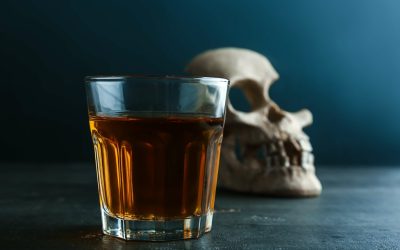Therefore, referring to addiction as a disease, without specifying when or why a condition is called a disease, results in the automatic association with the BDM. Therefore, it seems best to use disorder and disease both interchangeably to indicate the disruptive nature of addiction without inferring what the cause is of addiction, by explicitly stating that disease does not automatically imply a brain disease. By doing so, the terminology is broad enough to satisfy all of those studying addiction. Perhaps it will lose specificity as such, but since addiction is a highly heterogeneous disorder that requires an individual approach to the cause and course of the disease, it may very well be left more general. To summarize, the wording of the definition used under the BDM seems to suggest that drug cravings are impossible to control, whereas several choice theorists claim that addicts are able to do as they wish. The argument that addicts are not compelled because there are always alternative possibilities (together with a capacity to control), neglects an experiential and individualist account of addiction.
The neurobiology of drug addiction: cross-species insights into the dysfunction and recovery of the prefrontal cortex
- This provides a platform for understanding how those influences become embedded in the biology of the brain, which provides a biological roadmap for prevention and intervention.
- “Typically, ADHD is seen as inattention but the true representation is that they have attentional difficulties and can actually hyper-focus on the things they care about — until the novelty wears off.
- Even among conditions where signs of disease can be detected using brain imaging, such as Alzheimer’s and Parkinson’s disease, a scan is best used in conjunction with clinical acumen when making the diagnosis.
- The physician must race to disrupt this settling of scores before it is too late.
- To really delve into this question of why we do think of addiction as a disease, I spoke to Dr. Keith Humphreys, a Professor of Psychiatry at Stanford University, and a leading commentator on the addiction epidemic.
- Heroin is 100 times more potent than morphine, and fentanyl is 50 times more than heroin.
It is important to challenge misconceptions and stereotypes surrounding addiction in order to reduce stigma and improve access to treatment and support. Addiction is a complex condition that affects individuals from all walks of life. It is not a moral failing or a lack of willpower, but rather a chronic, relapsing brain disease that requires medical intervention and support. In the last part of the chapter, Heyman attempts to make a case for the importance of what he calls prudential rules in preventing drug abuse.
Is Addiction a Choice?: Opponents of the Disease Model
Although our principal focus is on the brain disease model of addiction, the definition of addiction itself is a source of ambiguity. Here, we provide a perspective on the major forms of terminology in the field. Seeing addiction as a disease can make individuals feel hopeless about change and helpless, with no possibility of control over their own behavior. That doesn’t mean it is easy to gain control https://www.roinfo.ru/archive/index.php/t-27958-p-2.html of the behaviors involved in addiction—but it is possible, and people do it every day. The disease model of addiction also suggests to people that they existing in a fragile state of recovery forever, always in danger of failing. Addiction is a natural language concept, etymologically meaning enslavement, with the contemporary meaning traceable to the Middle and Late Roman Republic periods [115].
- Hence, the BDM holds the view that self-control is impaired, which is a reasonable conclusion.
- Human neuroscience documents restoration of functioning after abstinence [40, 41] and reveals predictors of clinical success [42].
- I don’t wonder why my clients behave the way they do any more than I wonder why they cross the street while looking to the left.
- We also emphasize that denying that addiction is a brain disease is a harmful standpoint since it contributes to reducing access to healthcare and treatment, the consequences of which are catastrophic.
- These data suggest that commonly used diagnostic criteria alone are simply over-inclusive for a reliable, clinically meaningful diagnosis of addiction.
Box 1 What’s in a name? Differentiating hazardous use, substance use disorder, and addiction

The Athletic has spoken to more than a dozen medical and performance coaches, player-care staff members, psychiatrists, coaches and agents to understand why so many footballers are so reliant on it. They realised the impact of their precisely calculated http://ita-lab.ru/blog/good/page397/ plans for carbohydrate loading before matches and refuelling afterwards were being unwittingly diluted. Increased blood sugar blocks the body’s natural insulin response and can have knock-on effects on metabolism and cardiovascular function.

On the contrary, since we realize that addiction involves interactions between biology, environment and society, ultimate (complete) prediction of behavior based on an understanding of neural processes alone is neither expected, nor a goal. Because of this, neurobiology is a critical level of analysis for understanding addiction, although certainly not the only one. It is recognized throughout modern medicine that a host of biological and non-biological factors give rise to disease; understanding the biological pathophysiology is critical for understanding etiology and informing treatment. These data suggest that commonly used diagnostic criteria alone are simply over-inclusive for a reliable, clinically meaningful diagnosis of addiction. They do identify a core group of treatment seeking individuals with a reliable diagnosis, but, if applied to nonclinical populations, also flag as “cases” a considerable halo of individuals for whom the diagnostic categorization is unreliable. Any meaningful discussion of remission rates needs to take this into account, and specify which of these two populations that is being discussed.
- Usually, this happens because of the long-term psychological effects that stay in the brain of someone with a substance use disorder.
- Consequently, it is much more informative to attempt to reach a consensus regarding the capacities of the addict, most notably their ability for impulsivity and decision-making, rather than unnecessarily treating the two models as opposites.
- It concluded that neither genetic risk, the role of personal choices, nor the influence of environmental factors differentiated addiction in a manner that would warrant viewing it differently; neither did relapse rates, nor compliance with treatment.
- At the heart of the divide is a pernicious protein in the brain called beta-amyloid.
- They feel the substance abuser has no control over this kind of harmful behavior.
- To achieve this goal, we first discuss the nature of the disease concept itself, and why we believe it is important for the science and treatment of addiction.
It matters how people view addiction because that influences what they are willing to do about it, or even whether they believe they can do anything about it. “My battle with progressive supranuclear palsy, or PSP, has robbed me of my ability to use my full voice and move around in the ways that I used to,” she said. Wexton’s staff sent the company more than an hour of her past floor speeches and other public appearances. In just a few days, the company http://women.dp.ua/ponemnogu-obo-vsem/page/292/ created an AI model that was essentially a clone of Wexton’s voice before her diagnosis. Murali Doraiswamy, M.B.B.S., is professor of psychiatry and geriatrics at Duke University School of Medicine and a member of the Duke Institute for Brain Sciences. Lon S. Schneider, M.D., is professor of psychiatry, neurology, and gerontology at the University of Southern California and holds the Della Martin Chair in Psychiatry and Neuroscience at USC.

The USA also went through a phase of narcotic prescription, where physicians were encouraged, even exhorted, to prescribe liberally. They were not to question whether the patients’ demands were warranted or otherwise. Just as during the WWI era, many patients were prescribed morphine for pain and became indefinitely dependent upon it; the U.S. patients fared no better. Heroin is 100 times more potent than morphine, and fentanyl is 50 times more than heroin. Frequently, unbeknownst to the user, there are contaminants or additions to fentanyl of other synthetic drugs, which are many orders of magnitude more potent than fentanyl. Only a minority of active users of any substance will develop substance abuse and it may take many years.